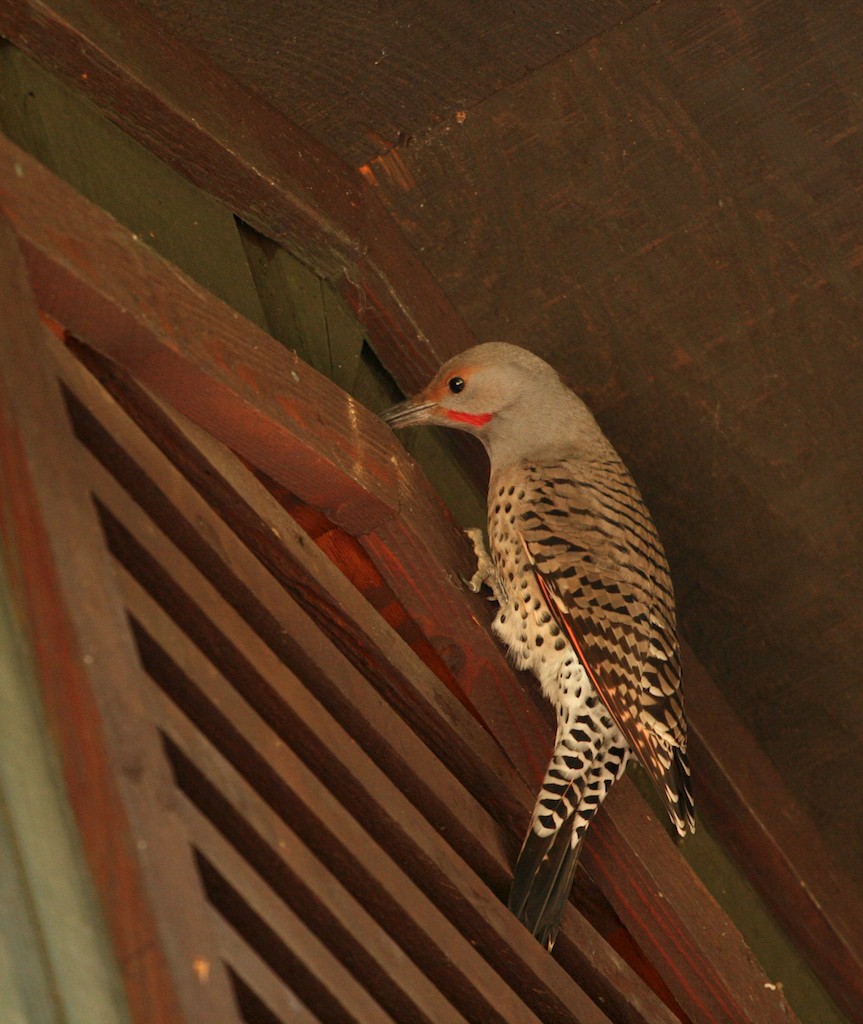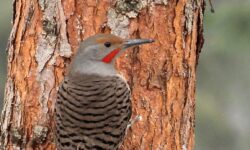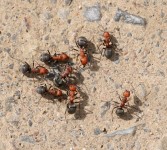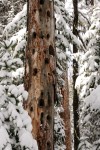Living with wildlife takes on a new meaning when they begin to share your house. Ants and insects commonly infiltrate into a house and can be tolerated, but a larger, noisier animal can be annoying.
Anyone who has had a Northern Flicker drumming on their house siding or chimney pipe knows how annoying flickers can become. If the flicker is like Goldilocks and finds your house “just right”, it may even excavate a nest cavity in your siding.
Flicker nesting habits
Typically northern flickers excavate cavities in weak wood of dead or dying trees but with abundant human-made structures available they also nest in aging utility poles, fence posts or house siding. Their stout beak chisels a six- to eighteen-inch chamber for eggs and both male and female excavate the cavity. Within house siding, the flicker will often pull out insulation to create the chamber.
Flicker eating habits
The round entrance hole to the nest differs from feeding holes. When searching for food on wood siding, flickers often leave dime-sized holes. As annoying to home owners as flickers seem, they are a huge asset for the number of insects they eat.
Northern Flickers are the most terrestrial of all North American woodpeckers partially because they forage for ants. Biologists have found over 2,000 ants in the stomachs of some Northern Flickers. They eat more ants than any other bird species in North America.
They use their long tongue that is covered with sticky saliva to collect ants scurrying above ground or in subterranean tunnels. Northern Flickers also forage for beetles, wasps, caterpillars and insect larvae. In the fall and winter, they also eat seeds and fruits.
When searching for insects on wooden surfaces, they often tap it, then look and listen for insect movement. Upon hearing or seeing an insect, the flicker will chisel away until the insect is caught.
A flicker frequenting the siding on a house and leaving dime-sized holes may indicate an insect problem. Eliminating the insect problem may be easier than shooing away the flickers.
Flicker mating habits
Even if your house isn’t a good food source, it may be a good drumming site in spring. Northern Flickers drum to establish a territory, attract a mate and communicate with a mate. Flickers will return to the same house every year to drum if the location was previously successful.
Flickers also mate for life and return to the same area to breed each year. Adults are highly site-faithful and return to a particular breeding site every year, which may include a house.
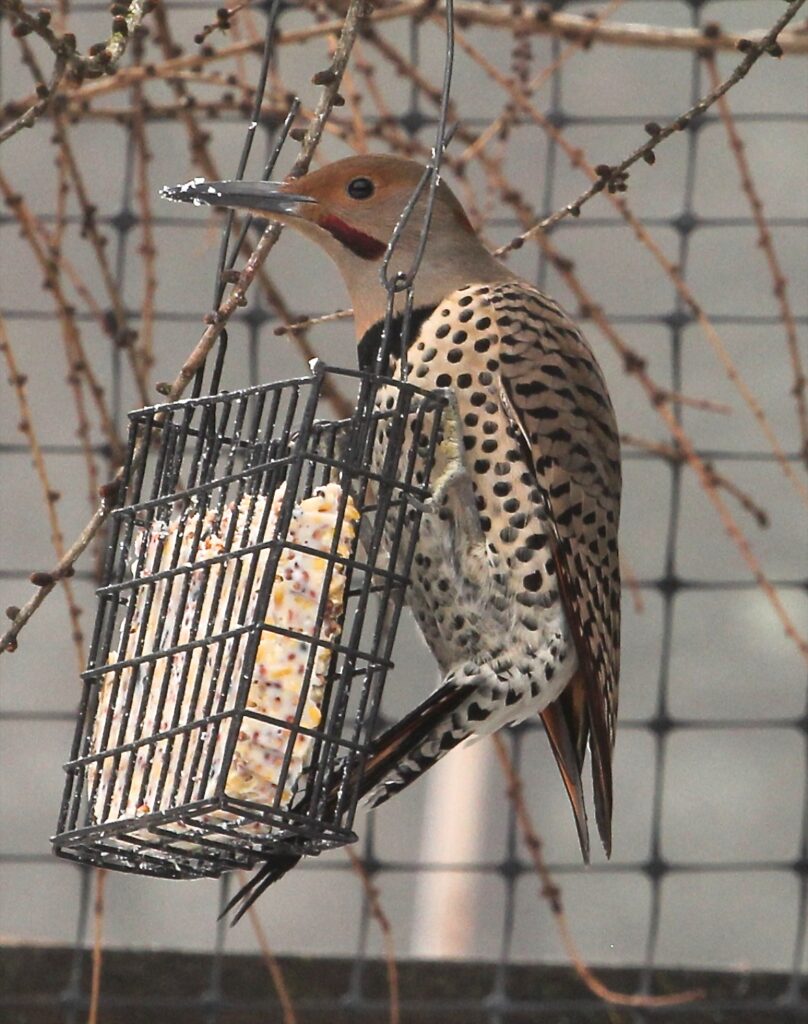
Flickers in northern latitudes typically only produce one brood a year. After the young birds fledge in July, homeowners can seal the hole in their house siding to prevent other animals from using the nest cavity. To keep Northern Flickers around for their insect eating capabilities, keep a few snags (dead trees) standing or provide nest boxes specifically designed for flickers to lure them away from your house.
One of the benefits of flickers is their creation of homes for secondary cavity nesters, such as bluebirds, wrens, nuthatches, and chickadees. Sealing up nesting holes in house siding is important if the homeowner doesn’t want to live with any other wildlife over the winter.
Originally published July 2013. Updated February 2024.

